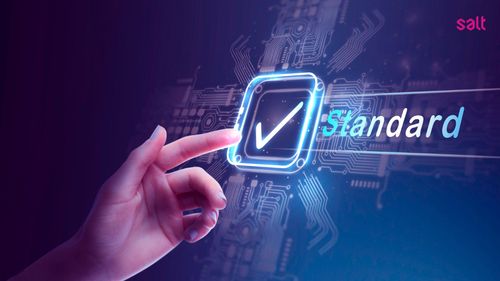The Ins & Outs of IT Solutions: Services and Its Examples
IT solutions have become a hot topic as technology advances due to their crucial role in various sectors and industries. From IT infrastructure development, repair, and maintenance to ensuring security and stability, all aim to achieve business goals amidst today’s dynamic competition.So, what exactly is IT Solutions, and how do they benefit the business and industrial world? Let's find out more in this article!A Glimpse into IT Solutions in Business & TechnologyBy definition, IT Solutions is a suite of products and services designed to meet a company's information technology needs. They encompass elements such as hardware and software, applications, programs, network infrastructure, and IT support.The goal of IT solutions in business is to enhance operational efficiency and effectiveness, ultimately boosting business productivity. Companies can optimize business processes and achieve goals more effectively by implementing the right IT solutions.Benefits of IT Solutions in Business ProcessesIT solutions have proven to bring significant benefits to a company's business processes, including:Increase Operational EfficiencyImprove Service QualityFlexibility and ScalabilityCost EfficiencyEnhanced SecurityImproved Collaboration and Communication24/7 SupportTypes of IT Solutions ServicesVarious types of IT solutions services are available, depending on the specific technological challenges faced by the company. These services can include Development, Repair, and Maintenance.Here are some standard IT solutions services utilized by companies:1. Technology DevelopmentTechnology development in business provides solutions by creating IT products companies use as part of their business strategy, whether for production, marketing, or operations.For example, a company may use digital platform development services, such as websites or mobile apps, to build long-term customer relationships through loyalty system features.2. Cloud ComputingCloud computing provides access to cloud computing resources via the internet, such as storage, data processing, and applications. This allows companies to rent IT infrastructure flexibly as needed without managing or purchasing hardware directly.Cloud services can also include Platform-as-a-Service (PaaS) and Software-as-a-Service (SaaS), which allow application development and usage without worrying about the complexity of the underlying infrastructure.3. Cyber SecurityCybersecurity involves practices and technologies designed to protect computer systems, networks, and data from cyber threats and attacks. This service includes solutions like data encryption, firewalls, threat detection, and identity management.The goal is to prevent unauthorized access, protect against malware and phishing attacks, and strengthen defences against increasingly complex cyber threats that can harm companies.4. TelecommunicationsTelecommunications services involve transmitting information and communication of voice, data, and video through communication networks, including services like telephone, internet, cable TV, and cellular networks.These services enable individuals and organizations to communicate effectively, access information, and share data globally.5. Network and Infrastructure ManagementNetwork and infrastructure management services aim to design, implement, and maintain an organization’s computer network and technology infrastructure.This includes managing hardware, software, and network resources to ensure IT service availability, reliability, and security. It also involves monitoring network performance and updating IT infrastructure as needed.6. Technical SupportTechnical support services involve providing technical assistance and troubleshooting general IT issues. The goal is to ensure users can utilize technology effectively without any obstacles.Examples of IT Solutions Implementation in Various IndustriesExamples of IT solutions implementation in various industries illustrate the importance of utilizing technology to enhance productivity and operational efficiency to achieve business goals.Here are a few examples from industries such as manufacturing, healthcare, retail, agriculture, telecommunications, construction, and marketing:1) IT Solutions in the Manufacturing IndustryIn manufacturing, IT solutions play a crucial role in optimizing production processes, managing supply chains, and improving overall operational efficiency.For example, using an Enterprise Resource Planning (ERP) system to integrate business functions like inventory management, production planning, and shipping processes allows manufacturers to manage them more efficiently.2) IT Solutions in the Healthcare IndustryIn healthcare, IT solutions are applied to improve the quality of care and patient information management.For instance, the use of Electronic Medical Records (EMR) allows healthcare providers to access and share patient information quickly and accurately, enhancing coordination and clinical decision-making.3) IT Solutions in the Retail IndustryIn retail, IT solutions aim to enhance customer experience, inventory management, and the management of a wide array of products (SKUs).For example, store management systems using Point of Sales (POS) technology allow business owners to manage sales digitally, and e-commerce and mobile commerce systems enable them to reach customers online.4) IT Solutions in the Agriculture IndustryIn agriculture, IT solutions services are used to increase production effectiveness and efficiency, farm management, and data-driven decision-making.For instance, the use of Internet of Things (IoT) sensors allows farmers to monitor soil conditions, weather, and plant growth in real-time through data.5) IT Solutions in the Telecommunications IndustryThe telecommunications industry heavily relies on IT for business processes, such as managing networks and delivering service information to customers.For example, Over-the-Top (OTT) systems help telecommunications operators optimize network performance, diagnose issues, and provide reliable services to customers, such as streaming.6) IT Solutions for Construction CompaniesFor construction companies, professional IT solutions are used to manage and monitor project progress and facilitate team collaboration.For instance, project management using Building Information Modeling (BIM) allows contractors to plan, oversee, and manage projects efficiently, reducing project risks and ensuring timely completion.7) IT Solutions in the Marketing WorldToday's marketing world heavily adopts digital strategies through IT solutions, such as campaign management, analyzing customer data, and enhancing brand loyalty.For example, developing digital platforms like website technologies and mobile app features, where the entire infrastructure is built on IT solutions from systems, design, integration, to security.Enterprise IT Solutions by SALT IndonesiaAs a company with a grand vision of global business technology development, SALT Indonesia has offered various IT solutions to enterprise businesses for over a decade.The tagline "Mission-Critical Technology Partner" represents this vision, which offers technology solutions from technology consulting, system and infrastructure development, data security, AI implementation, project and talent management, and more.Broadly, here are the 4 main pillars of solutions SALT provides to its clients:Bespoke Technology DevelopmentTechnology development solutions encompassing Data and Digital Platforms, Technology Operations, Customer Experience, Cloud Enterprise Solutions, E-commerce Technology, and Blockchain Technology.AI TransformationAI technology development solutions focus on company efficiency through Return On AI Investment (ROAI) and more effective market penetration.Talent AugmentationSolutions to accelerate project execution and adoption of the latest technology through IT Outsourcing, IT Headhunting, and IT Talent Pool services.Cyber SecuritySolutions to enhance business security from ever evolving and potentially emergent cyber threats.With a focus on innovation and technology excellence, SALT aims to assist companies from various sectors and industries through Strategic Partnerships to achieve business goals and success in today's digital era.Questions about IT Solutionsa. What are IT Solutions Services?IT Solutions Services are solutions provided by companies to help other businesses solve IT issues within their operations through software development, programs, applications, or providing various other IT services.b. What is the IT Solutions Company?An IT Solutions Company is a company that provides information technology products and services to help automate various operational aspects of a business.They not only provide and develop software, applications, programs, and IT support, but also sometimes offer solutions for more effective and efficient inventory management.For example, SALT, a Jakarta-based IT Solutions company, offers various IT services such as business technology development (Bespoke Technology Development), AI business transformation (AI Transformation), Cybersecurity, and Talent Augmentation for IT Outsourcing & Headhunting needs.Key TakeawaysThat was an overview of IT solutions that have revolutionized how companies operate, innovate, and compete in the global market by increasing service speed and quality.With ongoing technological advancements, companies must adopt and utilize these IT solutions to stay relevant, innovative, responsive, and dynamic in changing times.Aligned with this, SALT, as a Technology Enabler & Developer, can be a strategic partner in realizing business technology relevant to your business goals.Explore the various IT solutions we offer to start your transformation journey with us by clicking the banner below!





